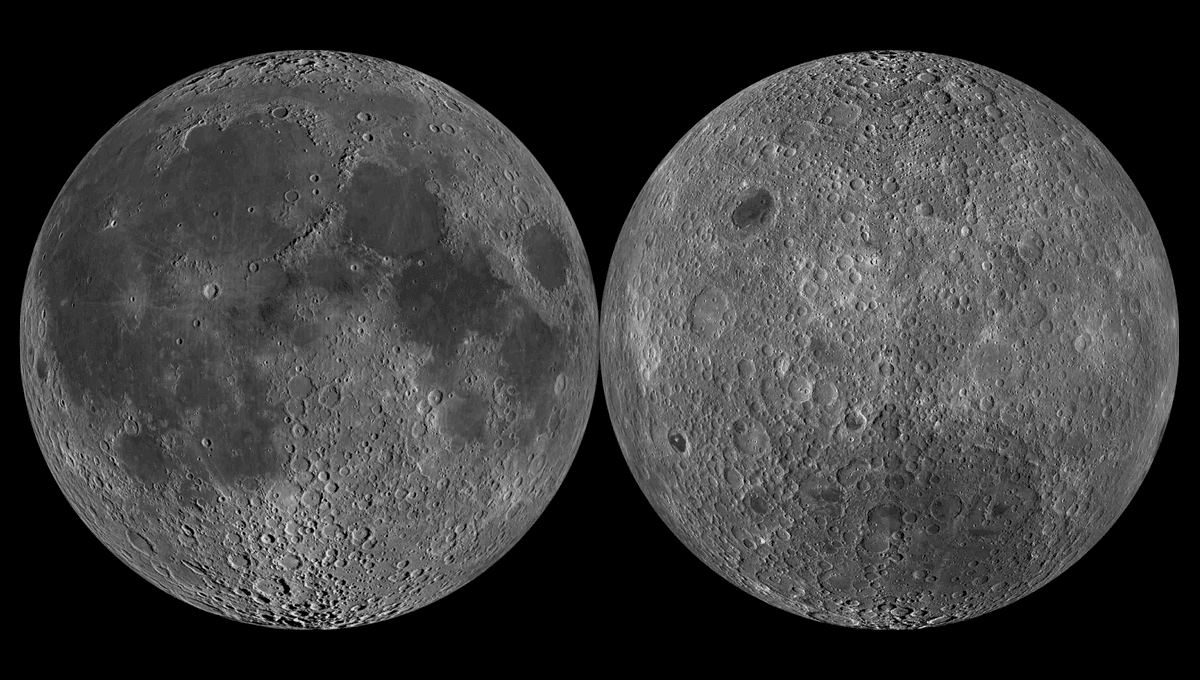
Since the first observation of the far side of the Moon in the 60s, it has been clear that there are major differences between the side of the Moon that we always see and the one that is always pointing away from us. The newest analysis has revealed that this difference is not skin-deep, but profound. The Moon’s interior on the nearside is different from that on the far side.
Analysis of data collected by the NASA Gravity Recovery and Interior Laboratory (GRAIL) mission has shown that there is a distinct temperature difference on the closer side of the Moon. The research team computed the Moon’s tidal Love numbers, values that describe how a celestial body deforms under an external gravitational force.
Our study delivers the most detailed and accurate gravitational map of the Moon to date.
Dr Ryan Park
This allowed the researchers to create a highly accurate, high-resolution map of the gravitational field of the Moon. It is in that map that the dichotomy between nearside and far side was found to extend deeper than thought.
“Our study shows that the Moon’s interior is not uniform: the side facing Earth (the nearside) is warmer and more geologically active deep down than the far side. This difference is linked to the Moon’s volcanic history and explains why the two sides look so different,” lead author Dr Ryan Park, senior research scientist at JPL, told IFLScience.
“The Moon’s nearside and far side look very different, as shown by differences in topography, crustal thickness, and the amount of heat-producing elements inside. These differences may come from variations deep within the Moon, causing one side to be warmer and more volcanic. Until now, there hasn’t been clear proof of these deep differences.”
The data suggests that the mantle on the nearside might be “softer” than the mantle on the far side by 2 or 3 percent. A small value, with big consequences. The temperature on the nearside mantle might be higher by 100 to 200°C (180-360°F), possibly due to the presence of radioactive material that has kept this side warmer for billions of years.
Many spacecraft have conducted observations of the interior of planets and moons by using gravity. Although not quite as detailed as GRAIL, this work has delivered new insights into Earth, Mars, Venus, Mercury, and the moons of the gas giants. Just a few months ago, observations from Juno revealed that the volcanic moon Io might be more solid than thought.
“By measuring how a planet’s gravity field changes as a spacecraft orbits, we can infer important properties about its internal structure-such as whether it is rigid, contains a liquid layer, or has significant variations in density,” Dr Park explained.
“As measurement techniques and technology continue to improve, future missions will be able to provide even more detailed and accurate gravity data, opening up new possibilities for studying distant worlds.”
That is great for understanding the evolution of solid bodies in the Solar System, but there is also a very pragmatic reason to do this work. It will be key to the future human exploration of the Moon.
“Our study delivers the most detailed and accurate gravitational map of the Moon to date. This enhanced gravity map is a critical foundation for developing lunar Positioning, Navigation, and Timing (PNT) systems, which are essential for the success of future lunar exploration missions,” Dr Park told IFLScience.
A detailed gravity map helps with navigation of spacecraft to and from the surface, as well as operations on that very surface. This work will be the basis of a large array of resources for future lunar explorers.
The study is published in the journal Nature.
Source Link: There Is Something Odd Going On Inside The Moon